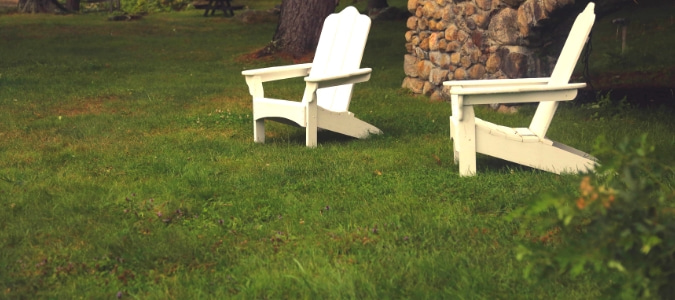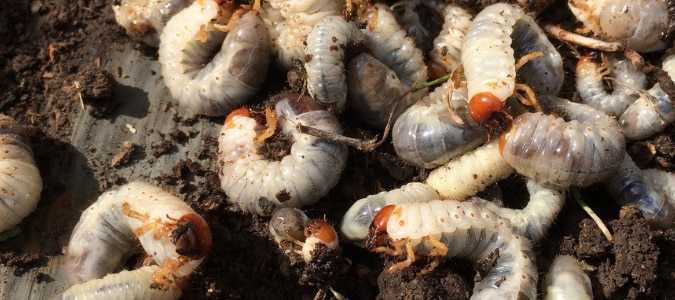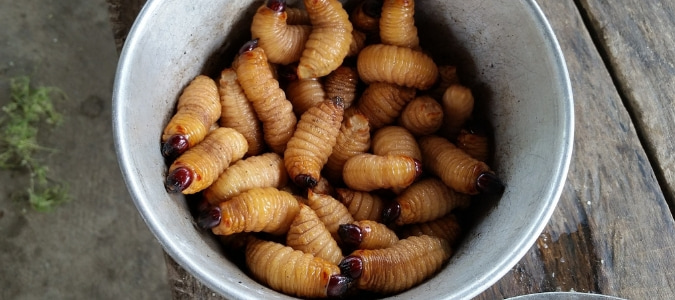Homeowners know that having a perfectly manicured lawn is very satisfying. Grass grubs can wreak havoc in your yard, digging up your grass and damaging it at the root level. They are every gardener’s worst nightmare, so knowing how to identify and control grass grubs is important. It can be hard to manage a grass grub infestation yourself, so contact a lawn care professional if you notice these lawn pests. They have the tools and expertise to restore your lawn to its pristine state.
Most Common Signs of Grass Grub Damage
If your yard has seen better days, grass grubs might be responsible for its deterioration. Here are the most common signs of grass grub damage to help you confirm your suspicions.
Brown Patches
If you see irregular brown patches on your lawn, grass grubs are likely the culprit. Grass grubs cause the grass to thin and turn brown. It’s a common problem during late summer and early fall. Grass grubs are the hungriest during this period, causing more dead grass to appear. However, there are other possible reasons for brown patches on your lawn, such as diseases or drought. Look out for other signs of grass grub to be sure.
Beetles Flying Above the Grass
If you are wondering what beetles have to do with grass grubs, they are the same species. Grass grubs are the larvae of beetles. Seeing beetles in your lawn doesn’t necessarily mean you have grass grubs, but an infestation might be imminent. Mature beetles fly over grass, looking for a place to lay eggs. Once the life cycle begins, there’s no stopping grass grubs from destroying your lawn. If you spot beetles, look for other signs of infestation.
Animals Feed on Your Grass
If animals like birds, skunks and raccoons come to your yard uninvited, grass grubs might be attracting them. It’s a double whammy for you because these animals will create other problems. They will dig through your lawn to get to the grass grubs and eat them. You might even see unsightly molehills.
Loose Grass
If your grass feels bouncy, spongy or loose under your feet, that’s a possible sign of grass grub damage. As grass grubs eat away at the roots, the connection between the grass turf and the ground weakens. If you don’t take action, it can lead to total detachment. If they cause enough damage, you can roll up your turf like a carpet. Repairing that level of damage is costly, so it’s best to catch the problem early.
Grass Grub Sightings
The best way to confirm if you have a grass grub infestation is to do a visual assessment. Dig up a few small spots in your lawn where you think there might be grass grubs and inspect the soil. They have a brown head, six legs and a plump, off-white body. They usually curl up into a C-shape when you unearth them. It is safe to assume you have an infestation when you see five or more grass grubs in a square foot.
Grass grubs can make it extremely difficult for homeowners to maintain a healthy yard. That is where lawn care specialists come in. They can confirm the presence of grass grubs in your lawn and take the necessary measures to control these pests.
When Is the Best Time To Treat for Grubs?
There are two types of grub control you can use on your lawn. Grub preventers are ideal if you want to preserve your perfect turf. But if your turf already has signs of damage, other products applied by a lawn care professional can help manage the infestation. It is crucial to time your usage well if you want these products to be effective.
Grass grub eggs are typically ready to hatch from April to mid-July. That is the best time to use grub preventers because the eggs won’t get a chance to incubate.
It’s not a bad idea to use grub control ahead of time to prevent the spread of these destructive pests. But there is such a thing as too early. Avoid treating your lawn in the spring because the grub control may already have lost its potency come July. That’s when the eggs tend to hatch.
With the right timing, you can decrease your lawn’s grass grub population by 80% in the coming season.
How To Optimize Grub Control
Aside from timing it right, there are other ways to optimize grub control. After grub treatment, you can keep your lawn healthy by using fertilizer regularly. That will help strengthen the grass and other plants in your yard. You can also prevent future grub infestations by aerating your lawn. Beetles like to lay their eggs in compacted soil, so aerating can help deter them. But the best way to maintain your lawn is by contacting a lawn care specialist. They can create a lawn care program to keep your turf green and healthy all year round.
Do Grubs Die in the Winter?
Homeowners think that if they wait until the winter, the grass grubs in their lawns will eventually die. But unfortunately, that’s not the case. While grass grubs are dormant in the winter, they don’t magically disappear. They will become active once the weather warms up. Grubs eat roots, plants and organic matter come summer.
Instead of counting on cold weather to control the grass grubs in your lawn, you can take matters into your own hands. Here are some natural ways to deter these creepy crawly pests.
Attracting Birds
Birds like robins and bluejays love to feed on grass grubs. While other animals will destroy your lawn while hunting for these pests, birds will do no damage. Attract them by installing bird baths and feeders. In turn, they will keep the grub population in your yard in check.
Milky Spore
Milky spore is a type of bacteria that feeds on grass grubs. You can buy them from your local gardening store and use a milky spore dispenser to scatter them on your lawn. Ideally, you should apply them a few times annually for three years. After that, the milky spore will serve as your lawn’s defense for the next 15 to 20 years.
Dethatch and Aerate
Grass grubs prefer to lay their eggs in dense and compacted soil. So you make your lawn unattractive to them when you detach and aerate it. Doing so will also make it easier for nematodes and milky spores to do their job.
Contact ABC to Control Grass Grub Damage
If you’ve invested time and money into beautifying your lawn, don’t let that all go to waste. Contact ABC Home & Commercial Services once you see signs of a grass grub infestation. Our lawn care professionals can prevent further damage and keep your lawn picture-perfect all year round.



